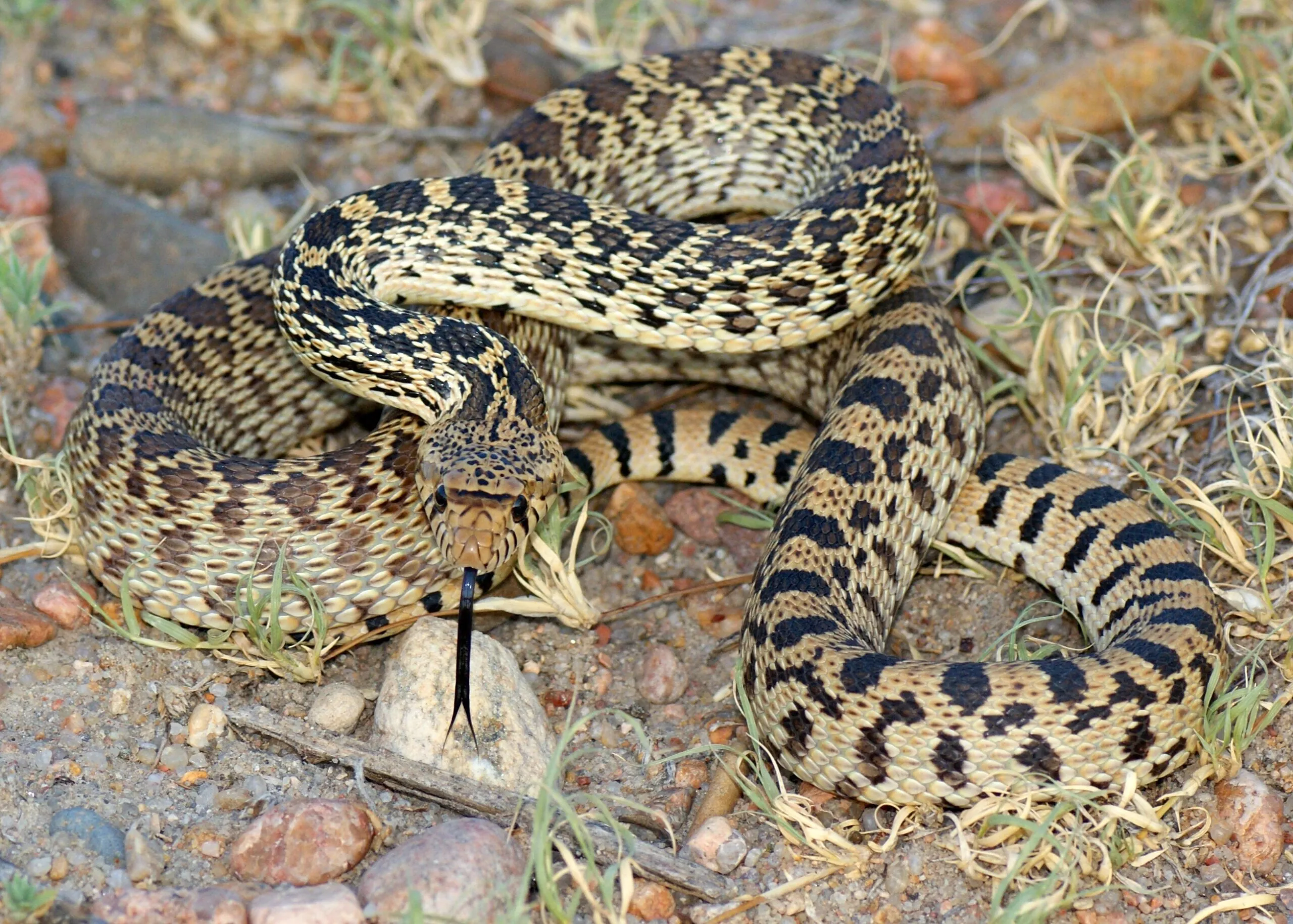Sonoran Gopher Snake
Pituophis catenifer affinis
Mistaken Identity
While many people are aware that the gopher snakes are non-venomous constrictors, they are unfortunately mistaken for rattlesnakes all too often. Their color patterns are similar at first glance, and gopher snakes will imitate rattlesnake behavior when threatened. With no rattle, gopher snakes can replicate the sound by rustling in dry grass. Combined with the hissing and flattening of its head, it’s no surprise that gopher snakes are sometimes mistakenly thought to be their venomous relatives.
Keeled Scales
When many people touch a snake, they anticipate a wet, slimy feeling. However, snakes are generally smooth or bumpy and dry. A gopher snake has scales that are keeled, meaning each individual scale has a central ridge line that results in an overall rough texture. Why is that? While there aren’t any specific explanations, aside from individuals having unique appearances, snakes with keeled scales tend to be less “shiny” and will camouflage better in an environment that is equally dull in color.
You Are What You Eat
As one might suspect, gopher snakes gets their name from the furry mammals they occasionally dine on. Posing a threat to farmland and gardens, gophers are often considered a widespread nuisance. Gopher snakes have no trouble seeking out these critters and constricting them before swallowing them whole. Aside from gophers, gopher snakes will prey on other small mammals, birds and even other reptiles.

Diet: small mammals, birds, eggs, lizards
Zoo Diet: whole prey (rodents)
Habitat: forests, deserts, prairies, shrublands
Length: 3 – 8 ft

Plan your visit today!
The Phoenix Zoo is one of the largest non-profit zoos in the U.S., caring for over 3,000 animals, with nearly 400 species represented, including many threatened/endangered species.

Plan your visit today!
The Phoenix Zoo is one of the largest non-profit zoos in the U.S., caring for over 3,000 animals, with nearly 400 species represented, including many threatened/endangered species.








